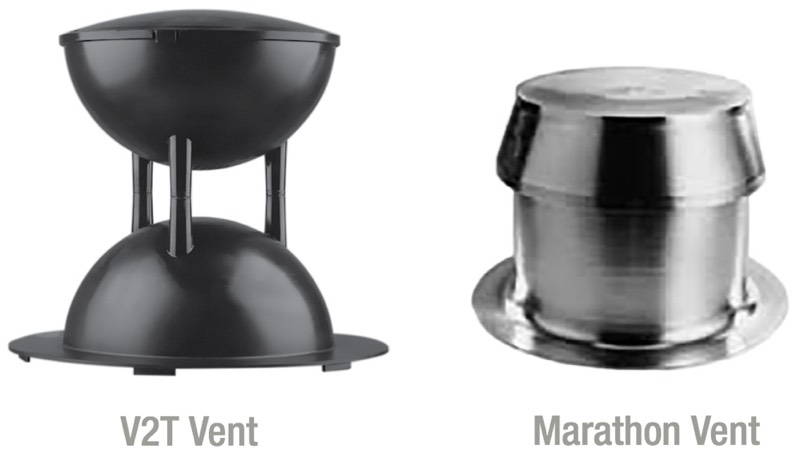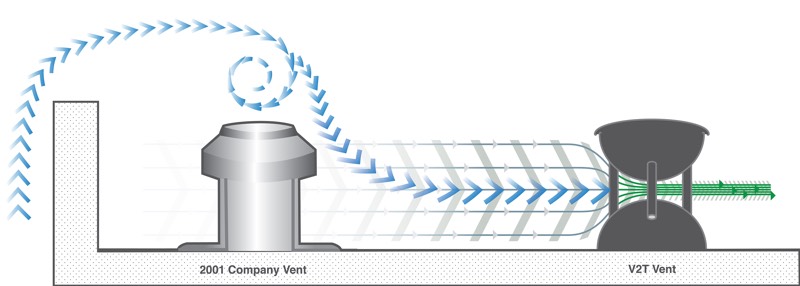V2T vs. the Alternatives
1. Geometry

The first and most important difference is the geometry of the two systems. The Kelly system vents designed to transfer the negative pressure created by the vortex from the wind coming over the perimeter edge (the negative zone) underneath the membrane. This will accomplish an equalizing pressure under the membrane created by the negative zone vortex.
The V2T Vent Technology geometry has a vent design that utilizes the Venturi principle through the opposing two hemispheres that will accelerate the wind through the vent. This now creates a negative pressure that is greater than the uplift pressure that is being exerted on the roof. The significant difference between these two systems is the additional negative pressure generated by the V2T Vent Technology. The Kelly system is a passive system that simply transfers the negative pressure while V2T is an active system that generates greater negative pressures under the membrane than what is being exerted on the roof surface.
2. Vent Positioning & Principles of Operation

The second difference is the positioning and principles of operation of the two systems. Because Kelly system is designed to operate in the negative zone, the vents are best positioned on the perimeter edge. However, that makes the vents on the non-windward side far less effective, and potentially non-operational.Because the V2T Vent Technology is engineered to be positioned in the interior of the roof, all vents on the roof are operational, which on average, presents a 400% increase in the functional vents on any given roof when using V2T.
3. Method of Installation
The Kelly System has requirements of securing the perimeter edge and penetrations with OSB board attached to the deck and adhering the membrane to the OSB board. The V2T Vent Technology does not have these requirements. Although both systems require air seals at the perimeter and around penetrations, the methods of accomplishing this are different. The Kelly System requires the air seals at the deck level whereas the V2T Vent Technology in general does not.
4. Manufacturers’ Warranties
The Kelly system is an independent system supported by 2001 Company and warranties are issued from 2001 Company. The V2T Vent Technology is partnered with and supported by many of the major roof membrane manufacturers, such as Carlisle Syntec, Versico and Flex who will issue warranties to the building owner’s using the technology.
5. Technology of the Future
The fifth difference is in the added technology capabilities. The V2T Vent Technology has the capability of installing a monitoring system in the vents which are equipped with sensors that can measure and wirelessly communicate, pressure, moisture, heat, wind speed or any other parameter that could be useful on the roof, in real time.
In general we believe that the V2T Vent Technology has a significant advantage in performance, installation, monitoring, environmental stewardship and cost than any other system on the market.
To date, we have millions of square feet of roof in all climates that is providing these benefits to contractors, building owners and manufacturers across the country.
